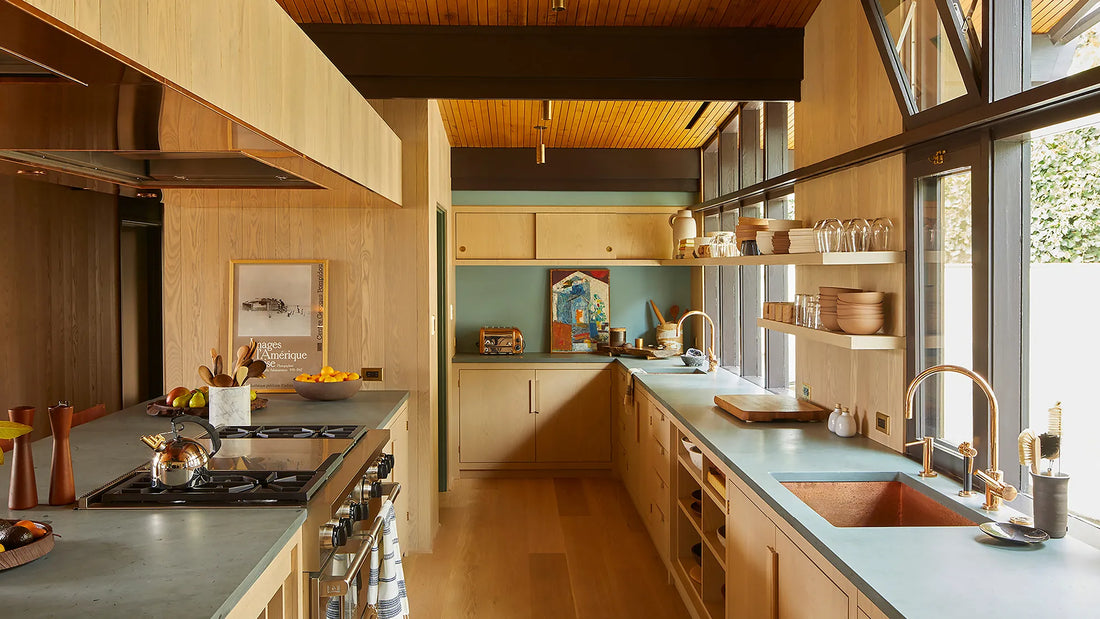
Crafting Culinary Elegance: The Art of Kitchen Interior Design
The kitchen, a vibrant hub of culinary creativity and family gatherings, is a space that marries functionality with aesthetic appeal. Kitchen interior design is a harmonious dance between style and practicality, where every element is carefully chosen to enhance the cooking experience while creating an inviting atmosphere. As we step into the realm of kitchen design, we'll explore essential elements, design principles, and creative ideas that transform this vital space into a haven of culinary inspiration.
Defining Kitchen Interior Design
Kitchen interior design is a fusion of form and function, where the layout, materials, and aesthetics harmonize to create a space that caters to both cooking needs and personal style. It's about striking a balance between efficient work areas and a warm, inviting ambiance that draws people together.
Key Elements of Kitchen Design
-
Layout and Workflow: The layout of a kitchen is critical. Common layouts include the U-shape, L-shape, and galley. The goal is to create a functional flow that allows easy movement between cooking, prep, and cleaning areas.
-
Cabinetry and Storage: Ample storage is essential for an organized kitchen. Incorporate well-designed cabinets, drawers, and pantry spaces to keep utensils, cookware, and groceries neatly tucked away.
-
Countertops: Choose durable and aesthetically pleasing countertops that can withstand the demands of cooking. Materials like granite, quartz, and marble offer both functionality and elegance.
-
Appliances: Modern kitchen design integrates high-quality appliances that streamline cooking processes. Stainless steel appliances are a popular choice, offering a sleek and contemporary look.
-
Lighting: Adequate lighting is crucial for safety and functionality. Combine ambient lighting with task lighting above work areas and accent lighting to highlight architectural features or decor.
-
Color Palette: The color palette sets the tone for the kitchen. Neutral tones create a timeless backdrop, while pops of color or accent hues can infuse energy and personality.
-
Backsplash: The backsplash offers an opportunity for creative expression. Choose materials like subway tiles, mosaic patterns, or even a statement backsplash that becomes a focal point.
Design Principles for a Stunning Kitchen
-
Efficiency: Prioritize efficiency in your kitchen layout. The "work triangle" – the relationship between the stove, sink, and refrigerator – should facilitate a smooth flow during cooking.
-
Storage Optimization: Maximize storage with smart solutions. Consider pull-out shelves, vertical dividers for baking sheets, and hidden compartments for small appliances.
-
Balance and Harmony: Achieve visual balance by ensuring that the design elements – from colors and textures to materials and decor – work harmoniously together.
-
Functionality and Ergonomics: Choose appliances and fixtures with user-friendly features. The height of countertops, the placement of handles, and the accessibility of items should all prioritize comfort and ease of use.
Creative Kitchen Design Ideas
-
Open Shelving: Incorporate open shelving for a contemporary and airy feel. Display stylish dishware, cookbooks, and decorative items that showcase your culinary passion.
-
Kitchen Islands: A kitchen island serves as a multifunctional centerpiece. It offers additional workspace, storage, and can even function as a casual dining area or a place for family gatherings.
-
Statement Range Hood: Make the range hood a statement piece by opting for a stylish design or a unique material that adds a touch of drama to the space.
-
Mixed Materials: Experiment with mixing materials in your kitchen design. Combine wood, stone, metal, and glass to create an engaging visual contrast.
-
Breakfast Nook: If space allows, consider creating a cozy breakfast nook with built-in seating. This area becomes a charming spot for morning meals or casual conversations.
Personalizing Your Culinary Haven
-
Lifestyle Integration: Tailor your kitchen design to your lifestyle. If you love entertaining, allocate space for a beverage station or a bar counter. If you're a passionate cook, invest in high-quality appliances.
-
Colorful Accents: Inject personality with colorful accents. Choose vibrant chairs, colorful backsplash tiles, or even a colorful island to add a playful touch to the design.
-
Greenery and Natural Light: Introduce natural elements by placing potted plants or herbs on windowsills. Natural light enhances the ambiance and complements the organic feel.
-
Smart Technology: Integrate smart technology into your kitchen. Smart faucets, lighting systems, and appliances add convenience and a futuristic touch.
In Conclusion: A Culinary Masterpiece
The kitchen is more than just a space for meal preparation; it's a canvas for culinary artistry and a place where cherished memories are created. Kitchen interior design offers you the opportunity to mold this space according to your vision – a vision that balances functionality with aesthetics, efficiency with warmth.
As you embark on your kitchen design journey, remember that each decision you make contributes to the overall experience of the space. Whether you're drawn to contemporary minimalism, rustic charm, or a fusion of styles, the key lies in creating a kitchen that speaks to your tastes and needs. By thoughtfully selecting materials, optimizing storage, and infusing your personal touch, you can transform your kitchen into a culinary masterpiece – a place where cooking becomes a joyful expression of creativity and where the heart of your home beats to the rhythm of shared meals and cherished moments.
